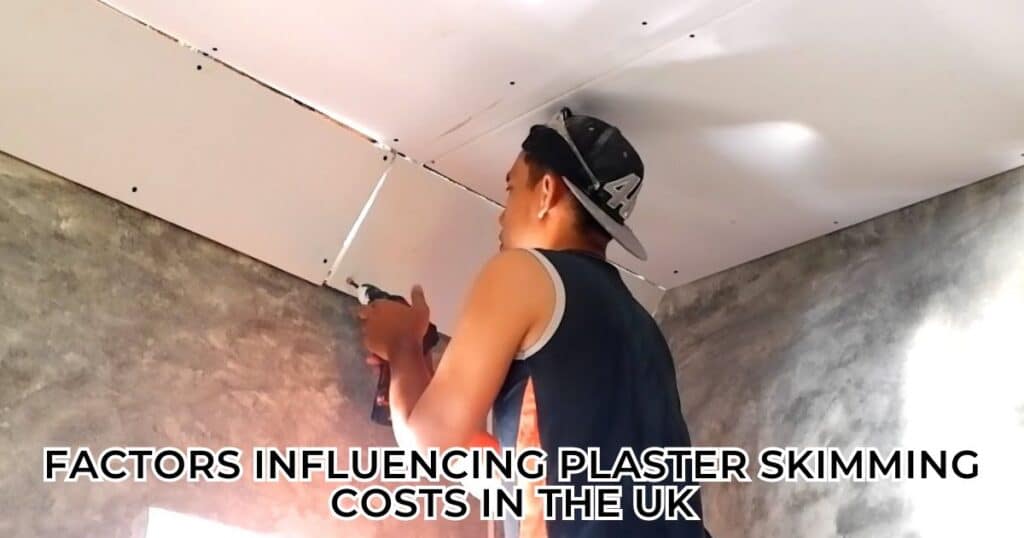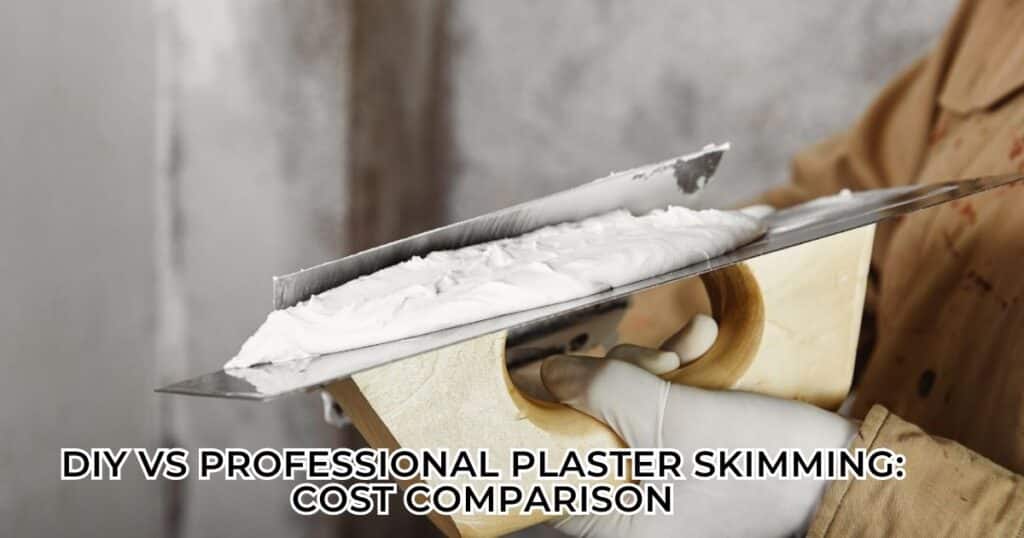How Much Does It Cost to Plaster Skim a Room in the UK?
If you’re an American homeowner considering a renovation project in the UK, you may have come across the term “plaster skimming.”
This process involves applying a thin layer of plaster over existing walls or ceilings to create a smooth, blemish-free surface.
While plaster skimming can significantly enhance the appearance of a room, it’s crucial to understand the associated costs to plan your budget effectively.
Understanding the Cost of Plaster Skimming a Room in the UK
Plaster skimming, also known as “skim coating” or “plaster dashing,” is a popular technique in the UK for refreshing tired or damaged walls and ceilings. It provides a uniform, seamless finish and can cover up imperfections, cracks, and uneven surfaces.
The cost of plaster skimming a room in the UK can vary considerably depending on several factors, but typically ranges from £500 to £700 or more.
Factors Influencing Plaster Skimming Costs in the UK

The total cost of plaster skimming a room is influenced by the following key factors:
- Room size and complexity: Larger rooms and those with intricate details or irregular shapes will require more time and materials, increasing the cost.
- Property location: Prices for labour and materials may be higher in urban areas compared to rural locations.
- Condition of existing plaster: If the existing plaster is in poor condition, additional preparation work, such as removing loose plaster or fixing cracks, may be necessary, driving up the cost.
- Access and preparation work required: Factors like the need for scaffolding or moving furniture can add to the overall expense.
- Type of plaster: Traditional plaster materials like lime plaster may be more expensive than modern alternatives like gypsum plaster.
Average Prices for Plaster Skimming a Room in the UK
To give you a general idea of what to expect, here are some average cost ranges for plaster skimming rooms of different sizes in the UK:
| Room Size | Average Cost Range |
|---|---|
| Small Bedroom | £200 – £400 |
| Large Bedroom | £300 – £600 |
| Living Room | £400 – £800 |
| Kitchen | £500 – £1,000 |
Please note that these are approximate figures, and the actual cost may vary based on the specific factors mentioned earlier.
Read More: The Ultimate Guide to Kitchen Remodeling: Transform Your Space with Expert Tips
How Room Size Affects Plaster Skimming Costs?
The size of the room is one of the primary factors influencing the cost of plaster skimming. Generally, the larger the room, the higher the cost. This is because more materials are required, and the labour time increases.
For example, let’s compare the cost of skimming a small bedroom (12 square meters) and a large living room (30 square meters):
Small Bedroom (12 square meters):
- Labour cost: £150 – £200 (estimated at £15 – £20 per square meter)
- Material cost: £50 – £100 (estimated at £4 – £8 per square meter)
- Total cost: £200 – £300
Large Living Room (30 square meters):
- Labour cost: £450 – £600 (estimated at £15 – £20 per square meter)
- Material cost: £120 – £240 (estimated at £4 – £8 per square meter)
- Total cost: £570 – £840
As you can see, the cost for the larger living room is significantly higher due to the increased labour and material requirements.
Labour and Material Costs for Plaster Skimming in the UK
The total cost of plaster skimming a room can be broken down into labour and material costs:
Labour Costs:
- Plasterers in the UK typically charge between £150 and £250 per day or £15 to £25 per hour.
- Rates may be higher in London and other major cities, where plasterers often charge £200 to £300 per day or £20 to £30 per hour.
Material Costs:
- Plaster materials can range from £4 to £10 per square meter, depending on the type of plaster used (e.g., gypsum, lime, or premixed plaster).
- Additional materials like plasterboard, beading, and other supplies may also be required, adding to the overall material cost.
It’s essential to factor in both labour and material costs when budgeting for your plaster skimming project.
DIY vs Professional Plaster Skimming: Cost Comparison

While it may be tempting to take on a plaster skimming project as a DIY endeavour to save money, it’s crucial to weigh the pros and cons carefully:
DIY Plaster Skimming:
- Pros: Lower upfront cost (materials only), ability to work at your own pace
- Cons: Steep learning curve, potential for mistakes and rework, time-consuming, lack of professional expertise
Professional Plaster Skimming:
- Pros: High-quality results, efficient work, expertise and experience, warranty on workmanship
- Cons: Higher upfront cost (labour and materials)
Here’s a cost comparison between DIY and professional plaster skimming for a medium-sized room (20 square meters):
DIY Plaster Skimming:
- Material cost: £100 – £200 (estimated at £5 – £10 per square meter)
- Total cost: £100 – £200 (excluding potential rework or repairs)
Professional Plaster Skimming:
- Labour cost: £300 – £500 (estimated at £15 – £25 per square meter)
- Material cost: £100 – £200 (estimated at £5 – £10 per square meter)
- Total cost: £400 – £700
While the DIY approach may seem more cost-effective initially, it’s important to consider the potential for errors, rework, and the time investment required. Hiring a professional plasterer may be more expensive upfront but can ensure a high-quality finish and save you time and potential headaches in the long run.
Hidden Costs to Consider When Plaster Skimming a Room
In addition to the apparent labour and material costs, there may be hidden expenses that you should factor into your budget for plaster skimming a room:
- Waste disposal fees: Removing old plaster or debris can incur additional costs for skip hire or council disposal fees.
- Scaffolding or access equipment rental: If working on ceilings or hard-to-reach areas, you may need to rent scaffolding or access equipment.
- Repairs or preparation work: If the existing plaster is in poor condition, additional costs may be incurred for repairs, filling cracks, or removing loose plaster before skimming.
- Furniture removal and protection: You may need to factor in the cost of moving and protecting furniture, or even temporary storage fees if necessary.
Discussing these potential hidden costs with your plasterer or contractor beforehand can help you avoid unexpected expenses and budget accurately.
How to Save Money on Plaster Skimming Your Room?
While plaster skimming can be a significant investment, there are several strategies you can employ to keep costs down:
- Get multiple quotes: Obtain quotes from at least three different plasterers or contractors to compare prices and ensure you’re getting a fair deal.
- Choose the right time: Plasterers may offer discounted rates during their off-peak seasons, typically in the winter months.
- Consider alternative materials: Explore the use of cheaper plaster materials like gypsum or premixed plaster, which can be more cost-effective than traditional lime plaster.
- Negotiate rates: If you have multiple rooms or a large project, you may be able to negotiate a better rate with your chosen plasterer.
- Tackle one room at a time: Instead of skimming an entire property at once, consider spreading out the work and tackling one room at a time to manage costs more effectively.
- DIY preparation work: If you’re skilled and willing to put in the effort, you can potentially save on labour costs by handling some of the preparation work yourself, such as removing old plaster or protecting furniture.
By being proactive and exploring cost-saving strategies, you can ensure that your plaster skimming project stays within your desired budget.
Common Mistakes to Avoid When Budgeting for Plaster Skimming
To ensure accurate budgeting and avoid costly surprises, it’s essential to be aware of some common mistakes homeowners make when planning for plaster skimming:
- Underestimating room complexity: Failing to account for intricate details, irregular shapes, or hard-to-reach areas can lead to underestimating the time and materials required, resulting in a higher-than-expected cost.
- Overlooking hidden costs: As discussed earlier, not factoring in potential hidden costs like waste disposal, access equipment rental, or repairs can derail your budget.
- Incorrect material estimates: Miscalculating the amount of plaster or other materials needed can lead to either overspending or running out mid-project, causing delays and additional expenses.
- Failing to account for room preparation: The cost of preparing the room, such as removing old plaster, filling cracks, or protecting furniture, can add up quickly if not properly considered.
- Not considering regional variations: Plaster skimming costs can vary significantly based on your location, with urban areas generally being more expensive than rural regions.
- Relying on outdated or unreliable quotes: Failing to obtain up-to-date and accurate quotes from reputable plasterers can lead to inaccurate budgeting.
By being aware of these common pitfalls and taking proactive measures to address them, you can create a realistic and comprehensive budget for your plaster skimming project.
Top Tips for Getting an Accurate Plaster Skimming Quote in the UK
To ensure you receive an accurate quote for your plaster skimming project, follow these top tips:
- Provide detailed information: When requesting a quote, provide clear and detailed information about the room(s) to be skimmed, including measurements, existing conditions, and any specific requirements or challenges.
- Request a site visit: Invite potential plasterers to visit the site and assess the room(s) in person. This will allow them to accurately evaluate the scope of work and provide a more reliable quote.
- Ask about inclusions and exclusions: Clarify what is included in the quoted price, such as materials, labour, preparation work, and cleanup, as well as any potential exclusions or additional costs.
- Obtain itemized quotes: Request itemized quotes that break down the cost of labour, materials, and any additional fees or charges, making it easier to compare and understand the pricing.
- Check references and reviews: Research the plasterer’s reputation, experience, and qualifications by checking references, online reviews, and relevant trade certifications or memberships.
- Get quotes in writing: Always request quotes in writing to avoid misunderstandings or disputes later on.
- Clarify payment terms and timelines: Discuss payment terms, such as deposits, progress payments, and final payment, as well as the expected timeline for the project.
By following these tips and being diligent in your research and communication, you can increase your chances of receiving an accurate and fair quote for your plaster skimming project in the UK.
Conclusion
Plaster skimming can transform the appearance of a room, but understanding the associated costs is crucial for American homeowners planning a renovation project in the UK. By considering factors like room size, complexity, labour rates, and material costs, you can develop a realistic budget for your plaster skimming endeavour.
Remember to account for potential hidden costs, explore cost-saving strategies, and avoid common budgeting mistakes. Most importantly, work with reputable plasterers and obtain accurate quotes to ensure a smooth and successful project execution.
With proper planning and budgeting, you can enjoy the benefits of a beautifully skimmed room without breaking the bank.







